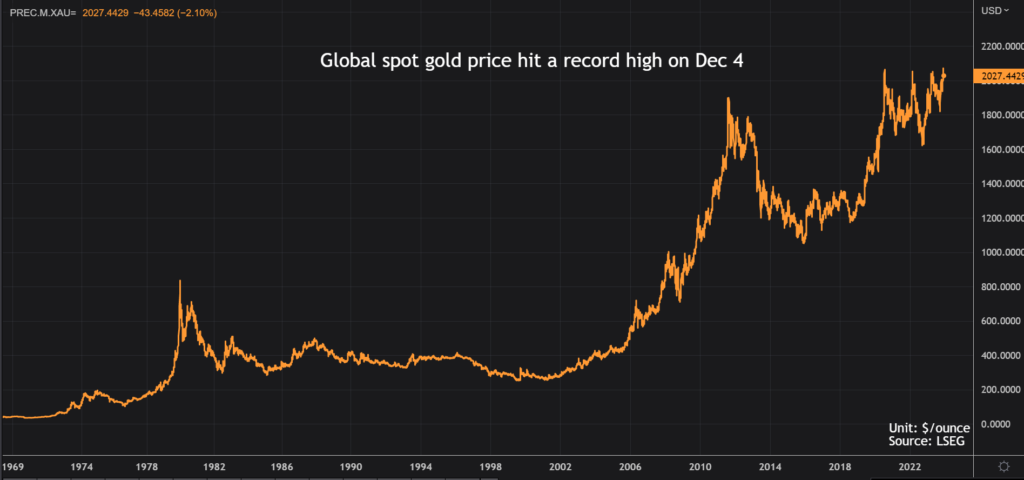GEMOLOGY
G7 to ban Russian diamonds, announce measures on price cap, assetsReuters | December 6, 2023 |

Image from Alrosa.
G7 leaders are expected to announce on Wednesday a ban on Russian diamonds and measures to manage some 300 billion euros ($323.58 billion) in immobilized Russian central bank assets and the G7 oil price cap, sources familiar with the matter said.

G7 leaders are had a virtual meeting on Wednesday.

One source specified that the G7 was expected to announce a direct ban as of Jan. 1 and then an indirect ban with a phase in period from March 1 until Sept. 1.
During the phase-in period, diamond companies will be able to use a self-declaration system like one provided by the World Diamond Council, the source added.
The system will use tracing and certification done through G7 countries and only apply to rough diamonds in an initial phase. Western countries initially looked at various proposals that covered rough and polished gems but countries could not agree on polished.
On the oil side, western nations have admitted that the impact of their $60 price cap on Russian crude oil has waned one year in, and the countries have been looking at ways to strengthen implementation. The EU’s latest proposed package of sanctions on Russia includes some measures to capture details on “ancillary costs” and slow the sale of old western ships to Russia’s so-called “shadow fleet”.
Meanwhile, the United States has started to impose sanctions on those who violate the price cap. Last week, Washington imposed additional sanctions, targeting three entities and three oil tankers as Washington seeks to close loopholes in the mechanism designed to punish Moscow for its war in Ukraine.
As for immobilized Russian assets, the European Commission is expected to propose next week a way to capture the windfall from the interest gained on the frozen assets. Coordination with the G7 is essential, however, as the assets are spread between various currencies though most is being held by Belgian clearing house Euroclear.
($1 = 0.9271 euros)
(By Julia Payne; Editing by Alexandra Hudson)
SOUTH AFRICA
Petra says prices have likely bottomed; secures increase in credit facility
8th December 2023
By: Creamer Media Reporter
Diamond mining group Petra Diamonds has sold 462 794 ct of diamonds for $58.7-million in its third tender for the 2024 financial year.
This is higher than the 444 029 ct sold for $41.5-million in the second tender of the current financial year and the 303 300 ct sold for $41.5-million in the third tender of the 2023 financial year.

The average price for the third tender of the current financial year was $127/ct, higher than the $91/ct achieved in the second tender of the year, but lower than the $137/ct achieved in the third tender of the prior financial year.
"The 20% increase in like-for-like prices for our third tender of financial year 2024 supports the view that diamond prices have likely bottomed.

“We believe actions taken by major producers to curb supply and the two-month Indian moratorium that comes to an end on December 15, together with strengthened retail sales in the US, have improved market conditions as inventory levels across the pipeline rebalance. Ongoing discipline by the key players is important to provide some price stability in the new year," comments Petra CEO Richard Duffy.
Meanwhile, financial services provider Absa has approved an increase of R750-million to an existing R1-billion first lien revolving credit facility.
The diamond miner, which operates three mines in South Africa and one in Tanzania, says R850-million has been drawn under the facility, leaving a balance of R900-million available under the upsized facility.
"Securing this increased facility, coupled with the recently announced capital deferrals and cost optimisation, further improves our resilience and operational and sales flexibility in the event of a weaker-for-longer diamond market," says Duffy.
Edited by Chanel de Bruyn
Creamer Media Senior Deputy Editor Online
Petra says prices have likely bottomed; secures increase in credit facility
8th December 2023
By: Creamer Media Reporter
Diamond mining group Petra Diamonds has sold 462 794 ct of diamonds for $58.7-million in its third tender for the 2024 financial year.
This is higher than the 444 029 ct sold for $41.5-million in the second tender of the current financial year and the 303 300 ct sold for $41.5-million in the third tender of the 2023 financial year.
The average price for the third tender of the current financial year was $127/ct, higher than the $91/ct achieved in the second tender of the year, but lower than the $137/ct achieved in the third tender of the prior financial year.
"The 20% increase in like-for-like prices for our third tender of financial year 2024 supports the view that diamond prices have likely bottomed.
“We believe actions taken by major producers to curb supply and the two-month Indian moratorium that comes to an end on December 15, together with strengthened retail sales in the US, have improved market conditions as inventory levels across the pipeline rebalance. Ongoing discipline by the key players is important to provide some price stability in the new year," comments Petra CEO Richard Duffy.
Meanwhile, financial services provider Absa has approved an increase of R750-million to an existing R1-billion first lien revolving credit facility.
The diamond miner, which operates three mines in South Africa and one in Tanzania, says R850-million has been drawn under the facility, leaving a balance of R900-million available under the upsized facility.
"Securing this increased facility, coupled with the recently announced capital deferrals and cost optimisation, further improves our resilience and operational and sales flexibility in the event of a weaker-for-longer diamond market," says Duffy.
Edited by Chanel de Bruyn
Creamer Media Senior Deputy Editor Online












